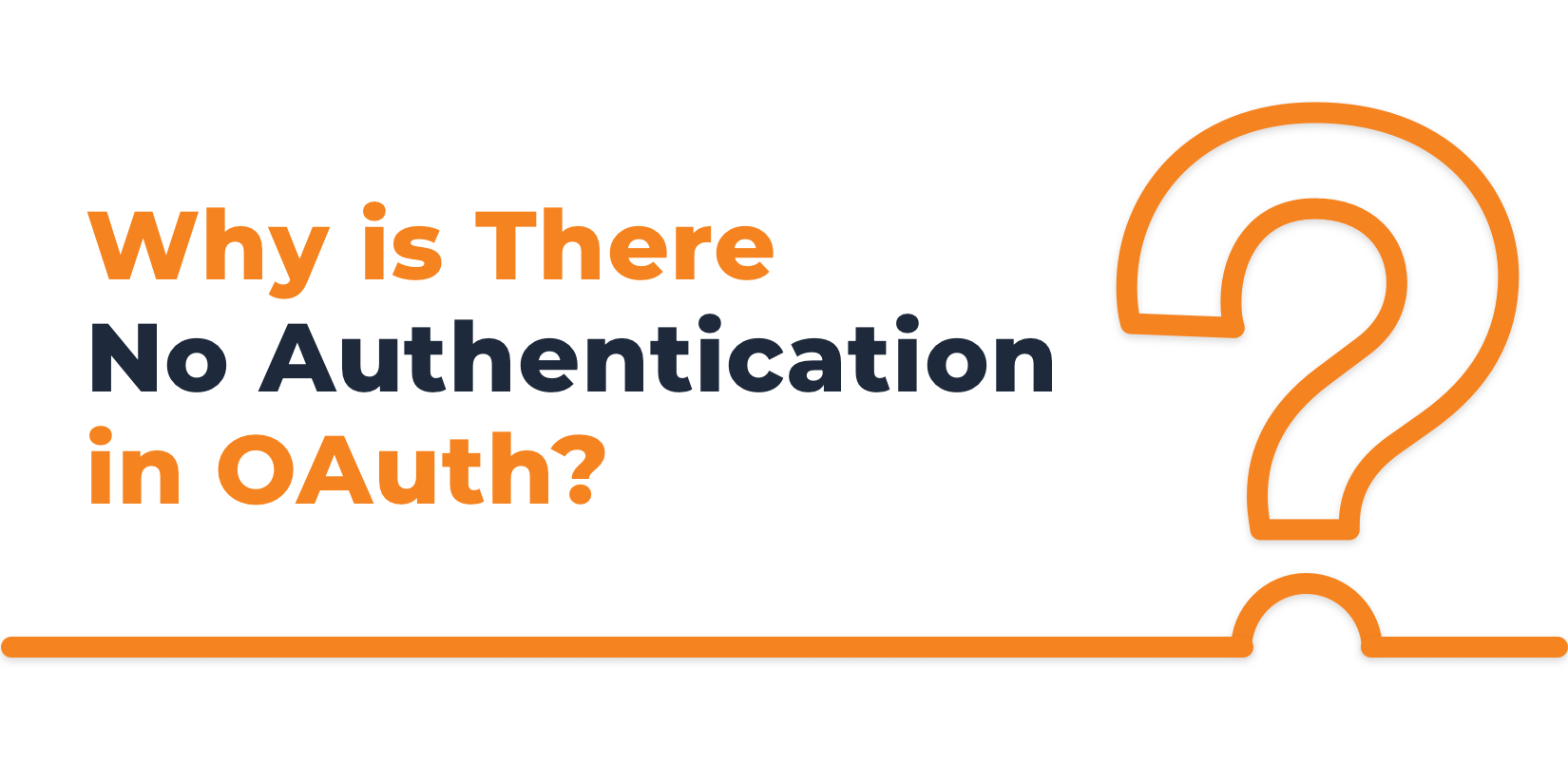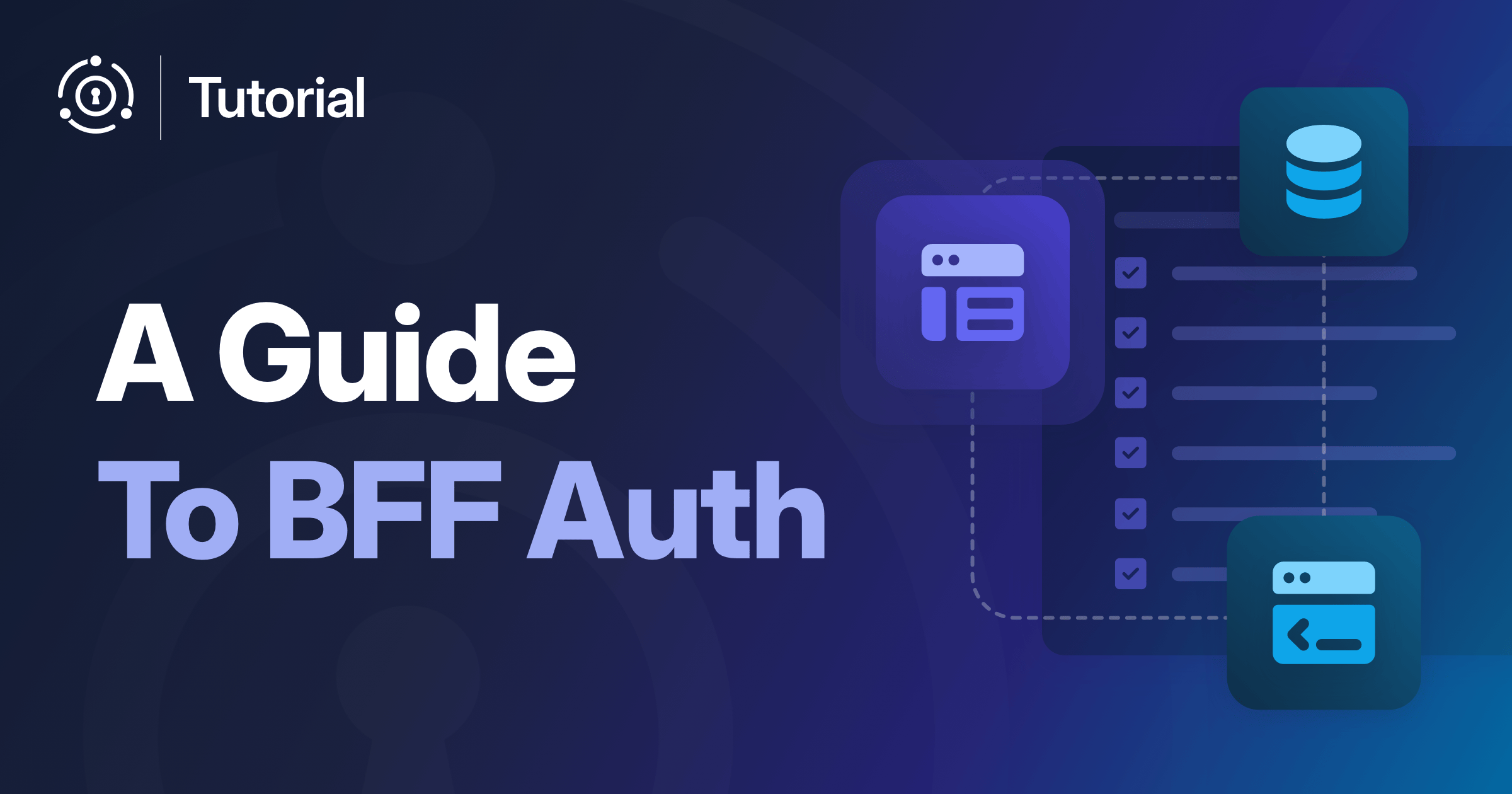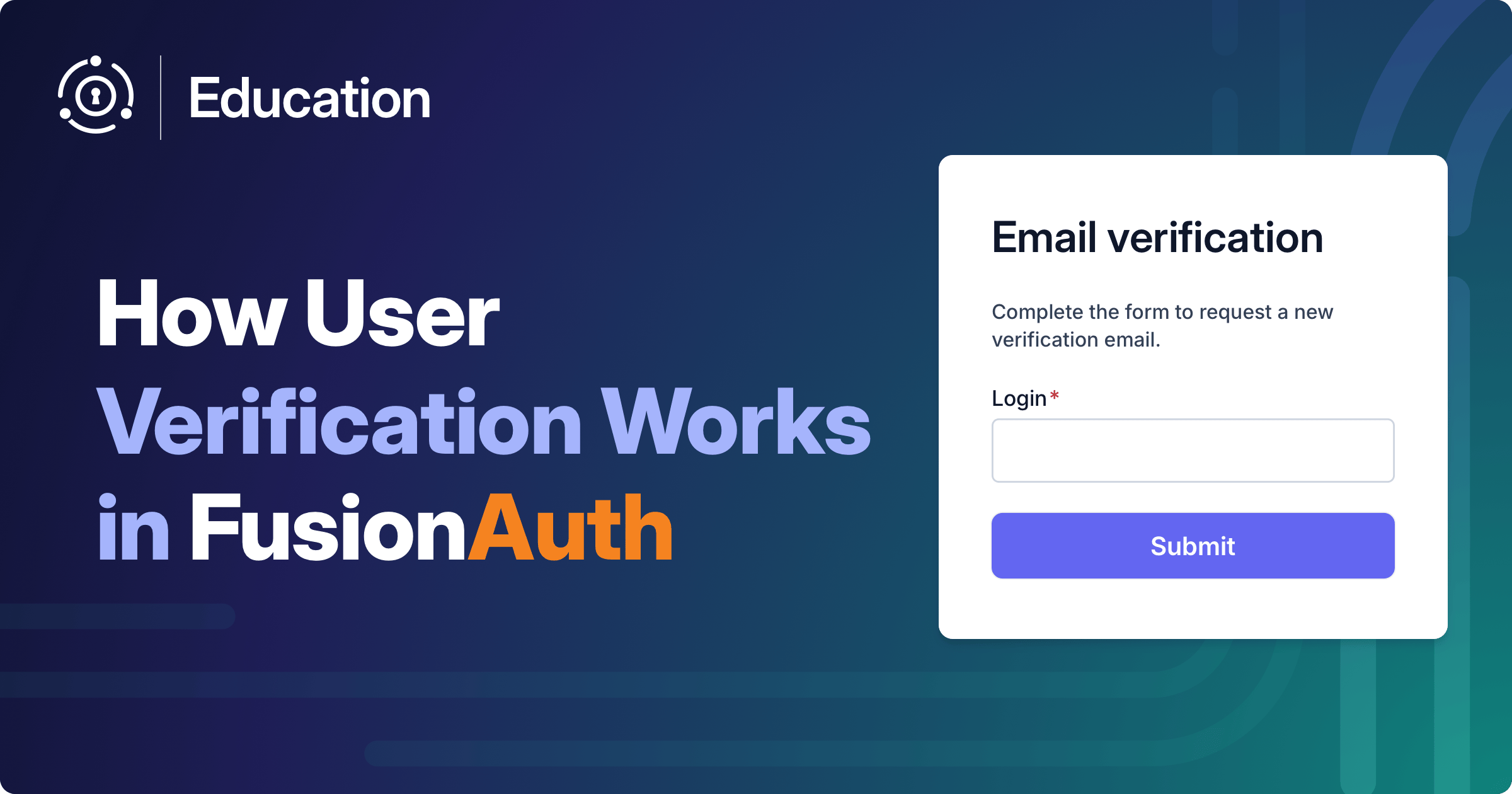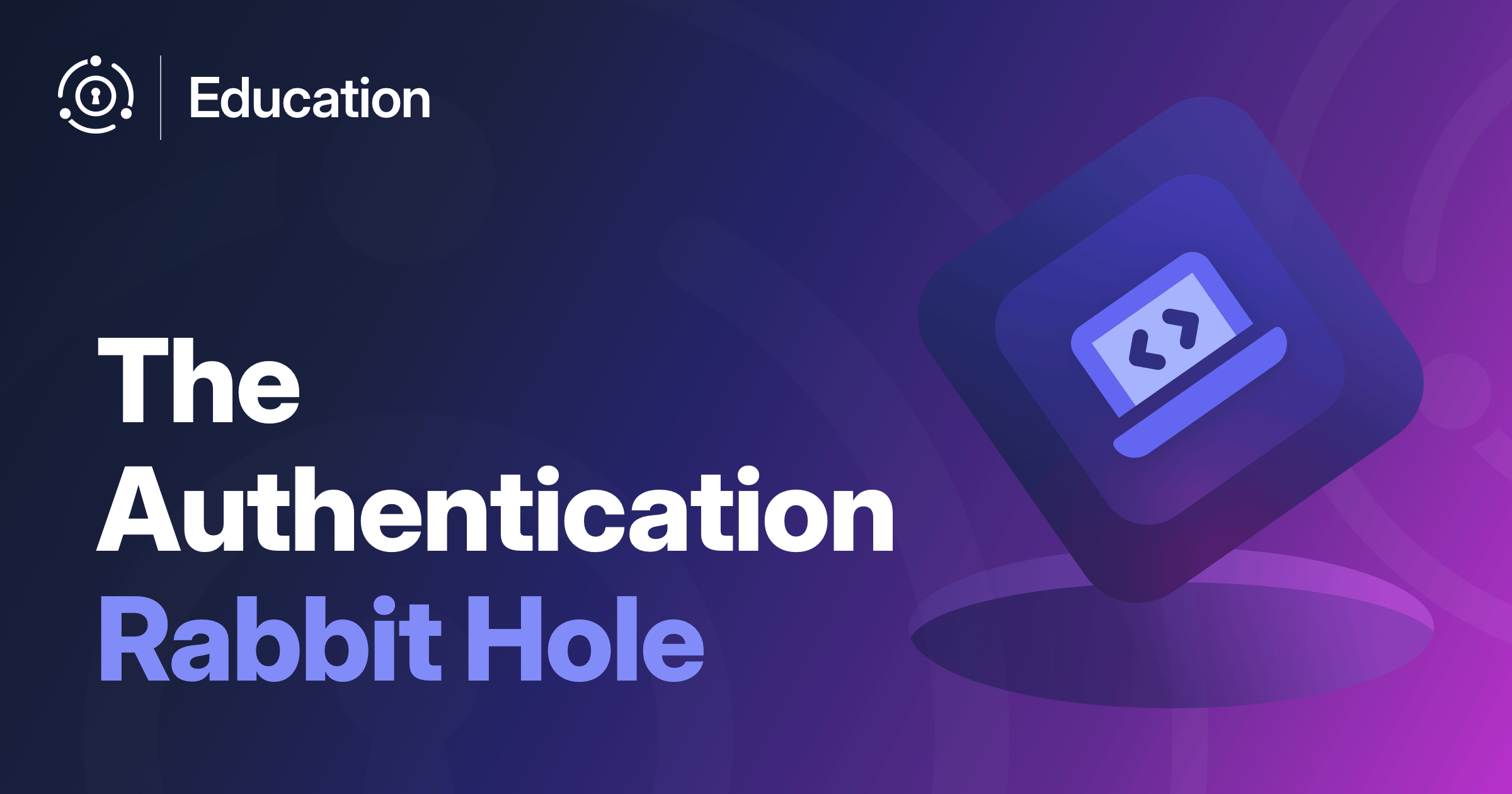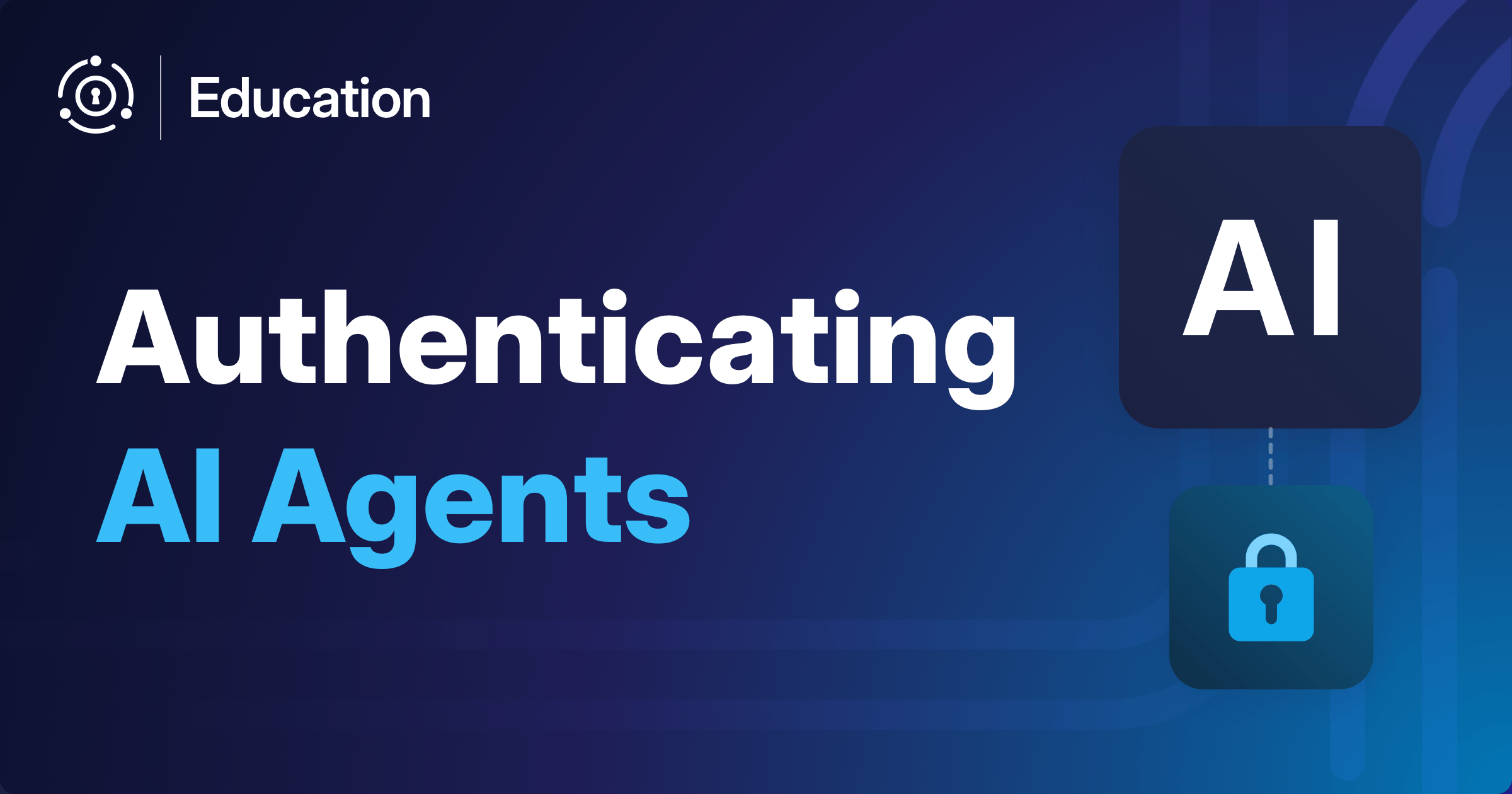OAuth, a standard for securely delegating authorization information, and OIDC, a profile written on top of it to securely transmit user profile data, both rely heavily on authentication of the user (also known as the ‘resource owner’) at the authorization server. The authorization server issues tokens only after the user has been authenticated to its satisfaction.
However, there is next to no guidance about how to actually authenticate the user. Should I use a username and password? A magic link? Delegate to a third party? Require a TOTP code?
This question came up in a discussion amongst the FusionAuth team and I thought it was worth digging into a bit more.
Why exactly is ‘authentication’ undefined in OAuth/OIDC?
The OAuth process is basically:
- The user (or, more precisely, some software acting on behalf of the user) tries to access a protected resource
- The protected resource redirects the user to the authorization server
- The authorization server authenticates the user
- The user is sent a token
- The token is presented to a protected resource
- The protected resource validates the token
- The user is granted access to a protected resource
This is a high level, truncated version, and there’s a lot more, but let’s keep it simple here. If you’d like more details about the OAuth process, please check out the Modern Guide to OAuth.
What do the specs say?
The Authorization Code grant is the main OAuth grant involving users, so that is the one to examine.
If you look closely at the specifications, it’s clear that authentication is critical to this grant. From RFC 6749, the OAuth2 standard, the authorization server is:
The server issuing access tokens to the client after successfully authenticating the resource owner and obtaining authorization.
What else does it say about authentication of the end user? In section 1.3.1:
Before directing the resource owner back to the client with the authorization code, the authorization server authenticates the resource owner and obtains authorization. Because the resource owner only authenticates with the authorization server, the resource owner’s credentials are never shared with the client.
So it’s clear that:
- Authentication happens at the authorization server, and
- The resource owner’s credentials are never shared with other parts of the system, including the client which is requesting access to any protected resources.
And yet, the means of authentication is never defined in the specification.
How about the OAuth 2.1 specification, currently under development? It’s very similar to the OAuth2 document in general, but in this case the 2.1 specification has expanded section 1.3.1:
Before directing the resource owner back to the client with the authorization code, the authorization server authenticates the resource owner, and may request the resource owner’s consent or otherwise inform them of the client’s request. Because the resource owner only authenticates with the authorization server, the resource owner’s credentials are never shared with the client, and the client does not need to have knowledge of any additional authentication steps such as multi-factor authentication or delegated accounts.
Here you start to learn something about the authentication process: the “additional steps” such as MFA. But there’s no full definition of how the authorization server should verify the user is who they say they are.
Well, OAuth is about authorization, not authentication. Perhaps OIDC spells out how you should authenticate the user? There is, after all, an entire section titled “Authentication”.
This section begins:
OpenID Connect performs authentication to log in the End-User or to determine that the End-User is already logged in. OpenID Connect returns the result of the Authentication performed by the Server to the Client in a secure manner so that the Client can rely on it. For this reason, the Client is called Relying Party (RP) in this case.
and further on covers the authentication process briefly.
If the request is valid, the Authorization Server attempts to Authenticate the End-User or determines whether the End-User is Authenticated, depending upon the request parameter values used. The methods used by the Authorization Server to Authenticate the End-User (e.g. username and password, session cookies, etc.) are beyond the scope of this specification. An Authentication user interface MAY be displayed by the Authorization Server, depending upon the request parameter values used and the authentication methods used.
So not only is authentication not defined, it is explicitly declared out of scope:
The methods used by the Authorization Server to Authenticate the End-User … are beyond the scope of this specification.
Okay.
So none of the specifications lay out what authentication looks like, though there are hints.
Why is this?
Separation of concerns
Separation of concerns is a common pattern in software systems. Developers break up systems into different components, with each component being responsible for a different piece of the system. Some parts are responsible for creating the user interface, others for data access.
In this case, the OAuth and OIDC specifications do not define authentication. Instead, they focus on the precursors and artifacts of an authentication event.
This means that the authorization server can authenticate the user to whatever level of certainty it needs, based on what it knows.
There are specifications for that, such as NIST 800-63-3 which defines the three levels of “Authenticator Assurance”. These are creatively named:
- AAL1
- AAL2
- AAL3
If we look at that document, you can see that the first level, AAL1, “provides some assurance that the claimant controls an authenticator bound to the subscriber’s account. AAL1 requires either single-factor or multi-factor authentication using a wide range of available authentication technologies. Successful authentication requires that the claimant prove possession and control of the authenticator through a secure authentication protocol.”
The next level, AAL2, is a step up and “provides high confidence that the claimant controls authenticator(s) bound to the subscriber’s account. Proof of possession and control of two distinct authentication factors is required through secure authentication protocol(s). Approved cryptographic techniques are required at AAL2 and above.”
AAL3 is the highest level and “provides very high confidence that the claimant controls authenticator(s) bound to the subscriber’s account. Authentication at AAL3 is based on proof of possession of a key through a cryptographic protocol. AAL3 authentication SHALL use a hardware-based authenticator and an authenticator that provides verifier impersonation resistance; the same device MAY fulfill both these requirements. In order to authenticate at AAL3, claimants SHALL prove possession and control of two distinct authentication factors through secure authentication protocol(s). Approved cryptographic techniques are required.”
There are more specifics in that document. Lots and lots of specifics.
There are other similar frameworks, such as the Trusted Digital Identity Framework and the UK digital identity & attributes trust framework with varying levels of detail.
Ignoring authentication is a great example of separating concerns. It allows OAuth2 and OIDC to focus on the nitty gritty of getting the resource owner to the authorization server as well as generating access and identity tokens.
Future proofing
By leaving the details of authentication methods to the authorization server, the OAuth and OIDC specifications remain relevant even if new methods of authentication are invented. For example, neither WebAuthn or FaceID existed when RFC 6749 was published.
But because the precise method of authentication is out of scope, both WebAuthn and FaceID can both be used in the process of obtaining an access token, if the authorization server requires it. The determination of the appropriate level of assurance for the login process is entirely up to the authorization server.
Context specific authentication
In addition to future proofing, an authorization server can introduce functionality strengthening authentication at the authorization server without affecting any dependent applications.
Examples of such functionality include:
- requiring one or more additional factors of authentication
- requiring specific factors for certain users
- implementing server side checks for suspicious behavior, such as requesting 100 password reset emails from the same IP address
- adding a CAPTCHA to prevent bot activity or credential stuffing
All of these are entirely the province of the authorization server. They can be added without affecting any protected resources or applications which depend on the token, when it is finally issued.
As RFC 6749 says, using this indirection removes “the resource server’s need to understand a wide range of authentication methods.”
The authorization server can also, as mentioned in the OAuth 2.1 draft, authenticate the user by delegating to an external identity store (or more than one). This allows for flexibility in terms of who “owns the user”, or which system is the system of record for a given user.
It’s not just authentication
Funnily enough, authentication isn’t the only major topic skirted by OAuth and OIDC.
Another question critical to identity that is simply not answered by these specifications is “How is the user provisioned in the authorization server?”
While there are specifications like SCIM that cover this, for OAuth and OIDC they are out of scope.
Conclusion
By depending on authentication of the end user, OAuth and OIDC allow users to securely delegate access to resources using tokens as credentials.
But by declaring the specifics of the authentication process out of scope, they remain flexible and relevant even as requirements and expectations around secure authentication change over time.


